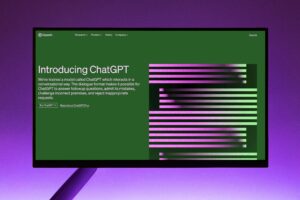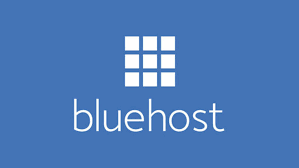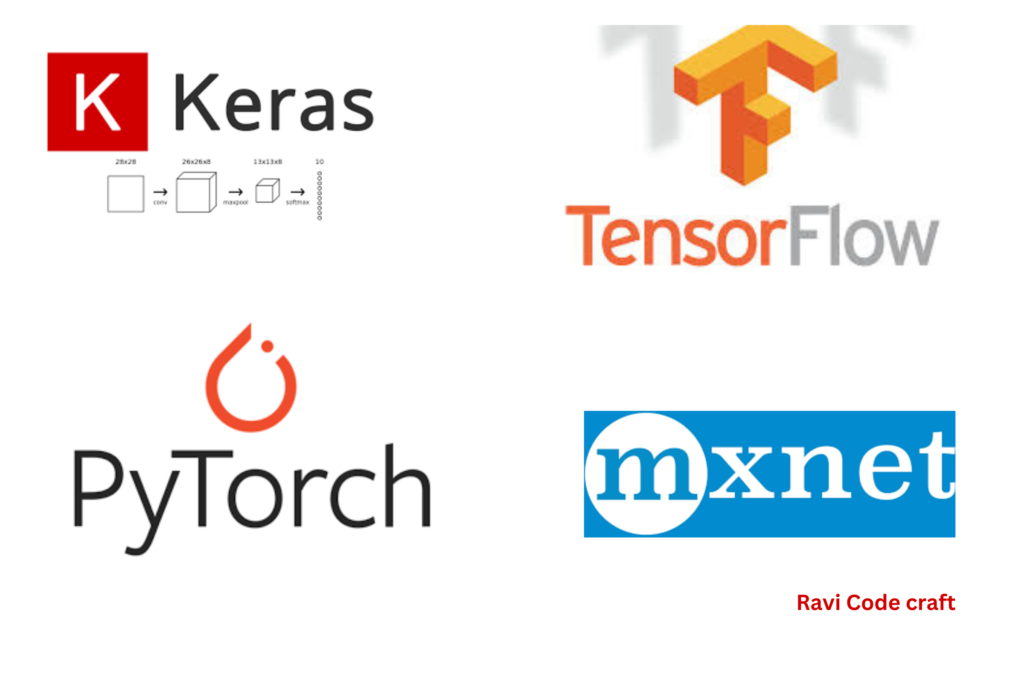
Deep learning techniques’ development has played a significant role in the field of artificial intelligence’s impressive recent developments. A subset of machine learning called deep learning has completely changed a number of fields, such as image recognition, natural language processing, and autonomous systems. The introduction of open source deep learning tools has been a key role in the widespread adoption and accessibility of these technologies. These technologies have opened up access to state-of-the-art frameworks, libraries, and algorithms, empowering programmers and researchers to investigate and advance the area of artificial intelligence.
In the year 2023, the landscape of open source deep learning tools will continue to improve, giving researchers and developers a wide range of choices for creating and implementing effective machine learning models. The top 10 open source deep learning tools that have received a lot of notice and praise in 2023 will be discussed in this article. The performance, adaptability, community support, and contributions to the development of deep learning were all taken into consideration while choosing these tools.
TensorFlow, created by Google, is the top tool on our list and has become the deep learning library of choice for many researchers and developers. It is appropriate for a variety of applications due to its adaptability and broad community backing. TensorFlow provides both a high-level API for creating neural networks and lower-level tools for precise model development control. It has grown in popularity because it supports distributed computing and enables effective training over multiple CPUs or GPUs.
PyTorch is another well-known tool that was created by Facebook’s AI Research team. Due to its dynamic computational graph and user-friendly interface, PyTorch has experienced substantial growth. It is the favoured option for researchers since it enables quick prototyping and research experimentation. Libraries like TorchVision and TorchText, part of the PyTorch ecosystem, provide specialised functionality for computer vision and natural language processing workloads. PyTorch has distinguished itself as a powerful force in the deep learning market by seamlessly integrating research and manufacturing.
Running on top of TensorFlow, Keras is a simple-to-use deep learning package renowned for its usability. It is a great option for both novice and seasoned practitioners because it offers a high-level API for creating and training neural networks. Developers may quickly iterate and experiment with various designs because Keras abstracts away TensorFlow’s intricacies. It is well-liked among fans of deep learning due to its sizable community and enormous library of pre-trained models.
We will examine six further open source deep learning programmes that have significantly advanced the field in 2023 in the following portions of this article. MXNet, Caffe, Theano, Torch, Deeplearning4j, Microsoft Cognitive Toolkit (CNTK), and PaddlePaddle are some of these tools. We aim to provide readers with thorough insights into the leading open source deep learning technologies influencing the AI environment in 2023 by analysing their features, strengths, and applications.
TensorFlow:
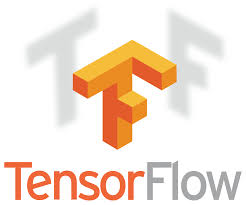
TensorFlow, developed by Google Brain, is a highly versatile and widely adopted open source deep learning library. It provides a comprehensive ecosystem for building, training, and deploying machine learning models. With its computational graph abstraction, TensorFlow allows users to define graphs that represent the computations and dependencies between operations, enabling efficient execution on CPUs or GPUs. This graph-based approach also facilitates distributed computing, where workloads can be divided across multiple devices or machines for faster training and inference. TensorFlow supports various neural network architectures and offers a high-level API called Keras, which simplifies the process of building and training models while leveraging the power of TensorFlow’s backend.TensorFlow Extended (TFX), TensorFlow.js, and TensorFlow Lite are a few of the libraries and tools that make up its ecosystem and enable the deployment of models in multiple scenarios. TensorFlow is a valuable tool for both researchers and practitioners because to its active and diverse community, which continues to drive improvements in computer vision, natural language processing, speech recognition, recommendation systems, and other disciplines.
PyTorch:
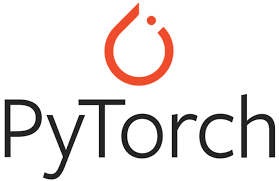
Facebook’s AI Research team created PyTorch, which has grown to be a well-liked and significant open source deep learning package. It differs from previous frameworks by providing a dynamic computational graph. Since models can be created and changed as needed while a programme is running, this dynamic nature enables greater flexibility and intuitive debugging. PyTorch is a popular option for quick prototyping and experimentation among researchers because of its simplicity of use and seamless Python integration. Libraries like TorchVision and TorchText, which offer specialised functions for computer vision and natural language processing applications, are a part of the PyTorch ecosystem, further enhancing its capabilities.
Feedforward networks, convolutional neural networks (CNNs), recurrent neural networks (RNNs), and transformers are just a few of the neural network topologies that PyTorch supports. Additionally, it provides users with access to a sizable library of pre-trained models, enabling them to take advantage of cutting-edge designs and produce spectacular results with little effort. Additionally, because of PyTorch’s popularity, a vibrant community has developed that actively contributes to its development and exchanges materials like tutorials, code samples, and academic papers.
Researchers, educators, and business people from a variety of fields have been drawn to PyTorch because of its versatility and strength. Applications for it range from computer vision tasks like image classification, object recognition, and image synthesis to tasks related to natural language processing like sentiment analysis, text generation, and machine translation. PyTorch’s place as a top open source deep learning library is firmly established by its emphasis on both research and production applications, as well as by the supportive community it enjoys.
Keras:

TensorFlow is the foundation for Keras, a user-friendly deep learning library. It streamlines the model development process by offering a high-level API for creating and training neural networks. Rapid experimentation is supported by Keras, and a sizable community contributes pre-trained models and materials.
MXNet:

Scalable deep learning framework Apache MXNet is renowned for its effectiveness and adaptability. Due to its support for both imperative and symbolic programming paradigms, it may be tailored to many use cases. MXNet is a great choice for multi-GPU and distributed training tasks, making it appropriate for sizable machine learning initiatives.
Caffe:
A popular deep learning framework for computer vision applications is Caffe. It’s perfect for convolutional neural network training since it places a strong emphasis on speed and modularity. Modern computer vision models are frequently created with Caffe due to its expressive architecture and robust community support.
Theano:
Theano is still a potent deep learning library even though it is no longer being actively developed. For the purpose of GPU acceleration, in particular, it offers a flexible and effective interface for defining and optimising mathematical expressions. Higher-level frameworks like Keras were developed in large part thanks to Theano.
Torch:
Deep learning is the main objective of Torch, a framework for scientific computing. It offers an adaptable environment for creating and refining neural networks. The Lua-based scripting language used by Torch is straightforward and user-friendly. The framework, which comes with a selection of pre-trained models, is becoming more and more well-liked by academics and developers.
Deeplearning4j:
The Java environment is smoothly integrated with the Java-based deep learning library Deeplearning4j. It enables the deployment of models on platforms like Apache Hadoop and Apache Spark and facilitates distributed computation. Due to its Java interoperability, Deeplearning4j is a useful tool for enterprise applications.
Microsoft Cognitive Toolkit (CNTK):
A deep learning library created for speed and scalability is the Microsoft Cognitive Toolkit, or CNTK. It offers high-performance inference and training, and it supports distributed computation on a number of GPUs and workstations. Workflows from development to deployment in the cloud are made simple by CNTK’s interaction with Microsoft Azure.
PaddlePaddle:
Baidu created PaddlePaddle, a user-friendly deep learning platform that supports both academic and commercial applications. It supports many neural network topologies and provides a complete set of tools. Due to its emphasis on simplicity and support for numerous programming languages, PaddlePaddle is usable by a variety of users.
Conclusion:
In conclusion, in 2023, the area of artificial intelligence has seen a revolution thanks to the open source deep learning techniques discussed in this essay. Developers and researchers may create and use complex machine learning models because to TensorFlow’s adaptability and wide-ranging community support, which makes it a dominant force in the market. PyTorch, which is well-known for its dynamic computational graph and user-friendly interface, has become quite popular among researchers due to its simplicity of use and capacity for quick prototyping.
These open source resources have democratised access to cutting-edge deep learning frameworks, libraries, and algorithms, enabling academics and developers everywhere to push the boundaries of AI research. Because they provide useful information, pre-trained models, and cutting-edge research, the active communities that surround these tools help them grow and improve.
These free deep learning tools have an impact on many different fields, including computer vision, natural language processing, reinforcement learning, and recommendation systems. These tools’ performance and adaptability have sped up development in a number of AI research and development fields.
Keeping up with the most recent developments in open-source deep learning tools is essential as we move forward. These tools will continue to advance, opening the door to ever more cutting-edge uses and developments in artificial intelligence. By utilizing the strength of these open-source frameworks, we can push the bounds of what is feasible and improve the direction of AI.
For more AI content:



